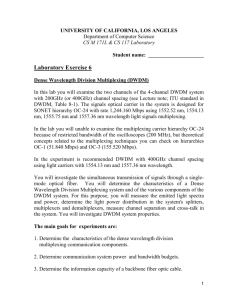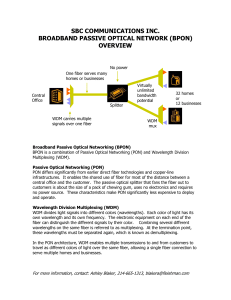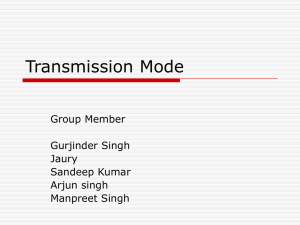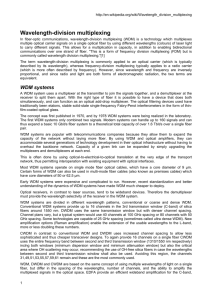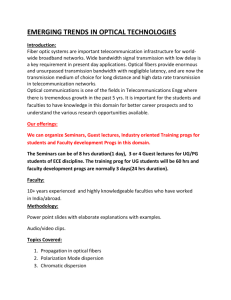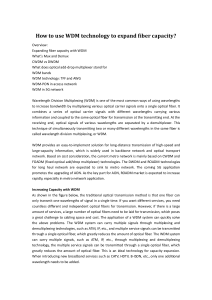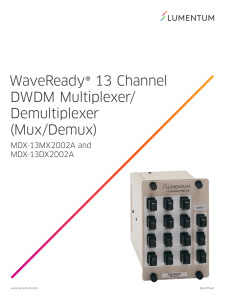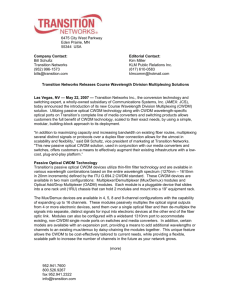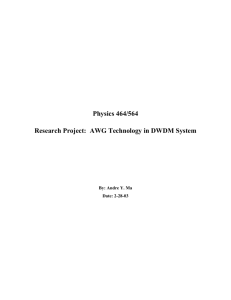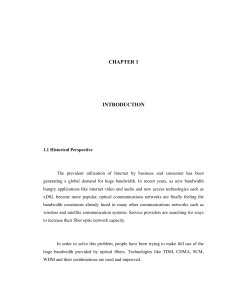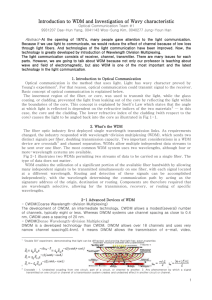6.2 WDM technology In fiber-optic communications, wavelength
advertisement
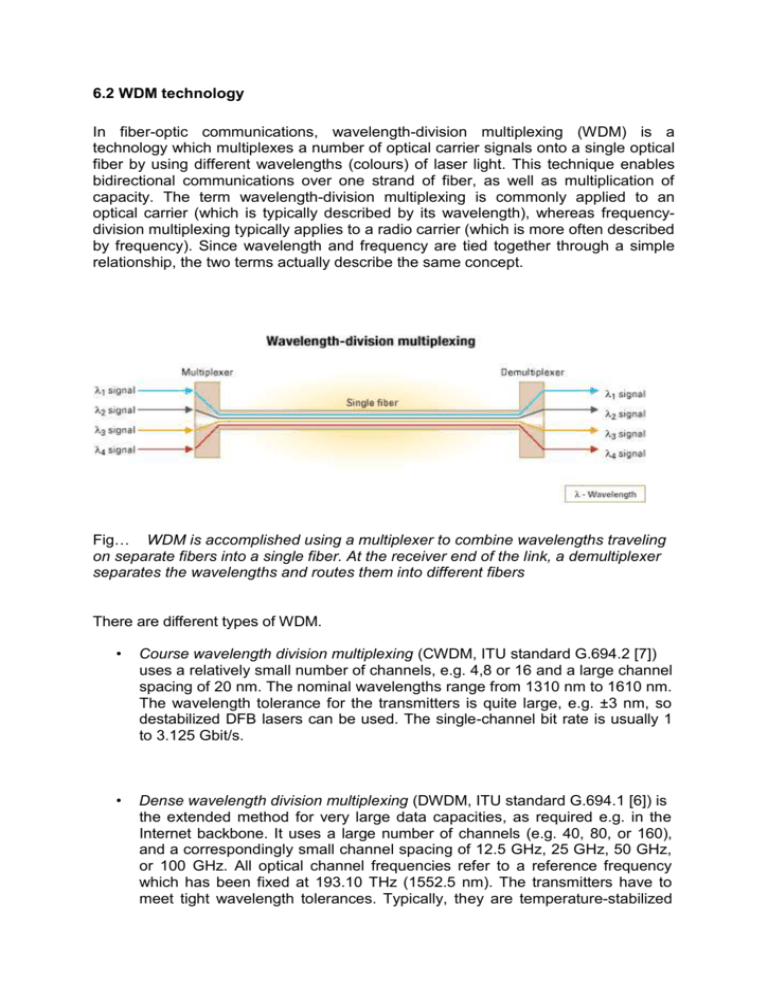
6.2 WDM technology In fiber-optic communications, wavelength-division multiplexing (WDM) is a technology which multiplexes a number of optical carrier signals onto a single optical fiber by using different wavelengths (colours) of laser light. This technique enables bidirectional communications over one strand of fiber, as well as multiplication of capacity. The term wavelength-division multiplexing is commonly applied to an optical carrier (which is typically described by its wavelength), whereas frequencydivision multiplexing typically applies to a radio carrier (which is more often described by frequency). Since wavelength and frequency are tied together through a simple relationship, the two terms actually describe the same concept. Fig… WDM is accomplished using a multiplexer to combine wavelengths traveling on separate fibers into a single fiber. At the receiver end of the link, a demultiplexer separates the wavelengths and routes them into different fibers There are different types of WDM. • Course wavelength division multiplexing (CWDM, ITU standard G.694.2 [7]) uses a relatively small number of channels, e.g. 4,8 or 16 and a large channel spacing of 20 nm. The nominal wavelengths range from 1310 nm to 1610 nm. The wavelength tolerance for the transmitters is quite large, e.g. ±3 nm, so destabilized DFB lasers can be used. The single-channel bit rate is usually 1 to 3.125 Gbit/s. • Dense wavelength division multiplexing (DWDM, ITU standard G.694.1 [6]) is the extended method for very large data capacities, as required e.g. in the Internet backbone. It uses a large number of channels (e.g. 40, 80, or 160), and a correspondingly small channel spacing of 12.5 GHz, 25 GHz, 50 GHz, or 100 GHz. All optical channel frequencies refer to a reference frequency which has been fixed at 193.10 THz (1552.5 nm). The transmitters have to meet tight wavelength tolerances. Typically, they are temperature-stabilized DFB lasers. The single-channel bit rate can be between 1 and 10 Gbit/s, in the future also 40 Gbit/s. Taking into consideration all the technical information, we have chosen CWDM technology accordingly to the distance of the link, or even with the number of channels we want to use in the fiber. Considering the 3rd transmission window, Cband, 1550 nm, using CWDM multiplexing technology we are allowed to transmit up to 8 channels along distances that have less than 80 km. This technology enable us to adapt perfectly to metropolitan areas (40-80 km) and is cheaper in relation to DWDM. Considering the theory and the physical medium we established the maximal distance when using CWDM at 60 km. We use DWDM technology for links with more than 8 channels and distances larger than 60 km. 6.2.1 Optical multiplexers / demultiplexers In that cases where more than one STM frame has to travel through fiber, we will need optical multiplexers and demultiplexers to implement WDM technology. For Coarse Wavelength Division Multiplexing we use devices that can multiplex two,four or eight channels or wavelengths depending on number of STMs to multiplex. In links where Dense WDM is implemented, we will need MUX capable of multiplex till 40 wavelengths. Fig …Type of Mux/ Demux and WDM technology use Type Mux Demux No. channels CWDM JDSU OSP CWDM ODM Insertion loss mux (dB) Insertison loss demux (dB) 2- channels 4-channels 2,3 dB 3 dB 2,3 dB 3 dB 8- channels 3,5 dB 3,8 dB JDSU CWDM Mux/Demux Filter DWDM JDSU 100 GHz DWDM Optical Add/Drop Module 4- channels 3,7 dB 8- channels 4 dB JDSU 13 channel DWDM MUX MDX13 MX2001A 13- channels 3,5 dB 3,7 dB 4 dB 3,5 dB JDSU 40-channel MDX-40MD101CB (PASIVO) 20 -channels 6 dB 6 dB
